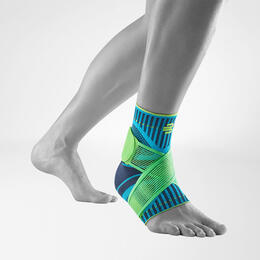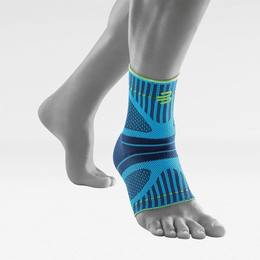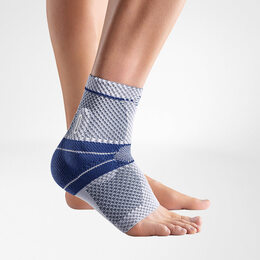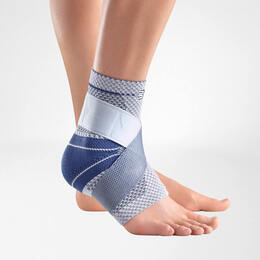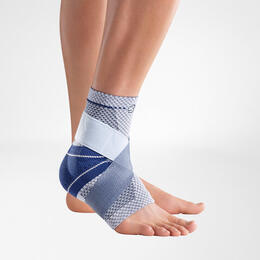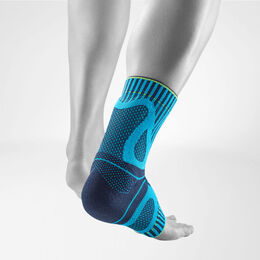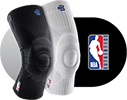Learn more about causes and treatment options for Achilles tendonitis
Often, all it takes is an awkward step to experience pain or discomfort while running. As a runner, you want to get back up on your feet and go the distance. Bauerfeind braces help protect and support your ankle to run more comfortably and perform at your best.
All products have been developed with athletes in mind and are ideal for runners looking to prevent injuries, have had an injury or pain in the past or want to recover more effectively. Try Bauerfeind products risk-free with our 60-day money-back guarantee.
Choosing the right ankle brace for running depends on your injury. Some of the most common running injuries affecting the ankle include: shin splints, Achilles tendinitis, ankle sprains and strains. While knitted braces are suitable in case of strains, a brace with additional straps or massage pads is better suited for more severe injuries, swelling and feeling of instability.
Bauerfeind ankle braces can help you to stabilize and support your joints, relieve pain and reduce inflammation and swelling to get you back to running.
- Shin Splints: Sports Ankle Support
- Achilles Tendinitis: Sports Achilles Support, AchilloTrain Pro, AchilloTrain
It’s always best to talk to your physician, physical therapist or any other healthcare provider for advice on what form of treatment will work best for your situation.
Medial tibial stress syndrome, also known as “shin splints,” is a common source of pain for many runners and athletes. It’s characterized by pain along the inner side of the lower leg, along the shin bone. Previous ankle injuries and ankle laxity are contributing factors to developing shin splints.
Bauerfeind has worked with runners and physical therapists to develop a new, drug-free shin splint pain solution that has been shown to relieve shin splints, without taking the athlete away from their training. With the Sports Ankle Support, runners can stabilize their ankle with an individually adjustable strap that does not change the natural gait or limit the range of motion. Athletes reported a significantly improved pain score from 7.8/10 to 1/10 within four weeks of wearing the brace.
A good ankle brace is shaped to perfectly fit the anatomical contours of the foot. If you look at your ankles, you will notice that the inner and outer parts have different shapes. Ankle braces from Bauerfeind take this difference into account in order to provide optimum support to the individual structures of the ankle. For this reason, you should only wear the support on the side it is designed for — not on the other side.
Generally speaking, Bauerfeind’s lightweight, breathable supports can be worn in running or trail running shoes. Make sure that there is no constriction in the region of the integrated massage pads. In any case, it is advisable to try out your shoe with the brace before going on a long run. Wear a sturdier shoe to provide the optimum level of effectiveness and stability.
Bauerfeind ankle braces work better directly on the skin. Direct contact with the skin achieves better proprioceptive effects that create additional stability in the joint. Wearing socks beneath the brace can lead to chafing and impair the function of massage pads to relieve strain and reduce swelling. Don’t worry — Bauerfeind braces are machine-washable!
Yes. Washing your braces regularly helps maintain their shape and last longer.
For products with Velcro straps, fasten them securely at the place provided on the brace. Machine-wash your brace, sleeve or socks in cold water using a gentle or delicate cycle. Wash separately using a laundry detergent with no additives (do not use fabric softener or Woolite). Lay flat and let it air-dry. Do not put it in the dryer. Proper washing and drying helps keep the knit’s elasticity and original fit.

